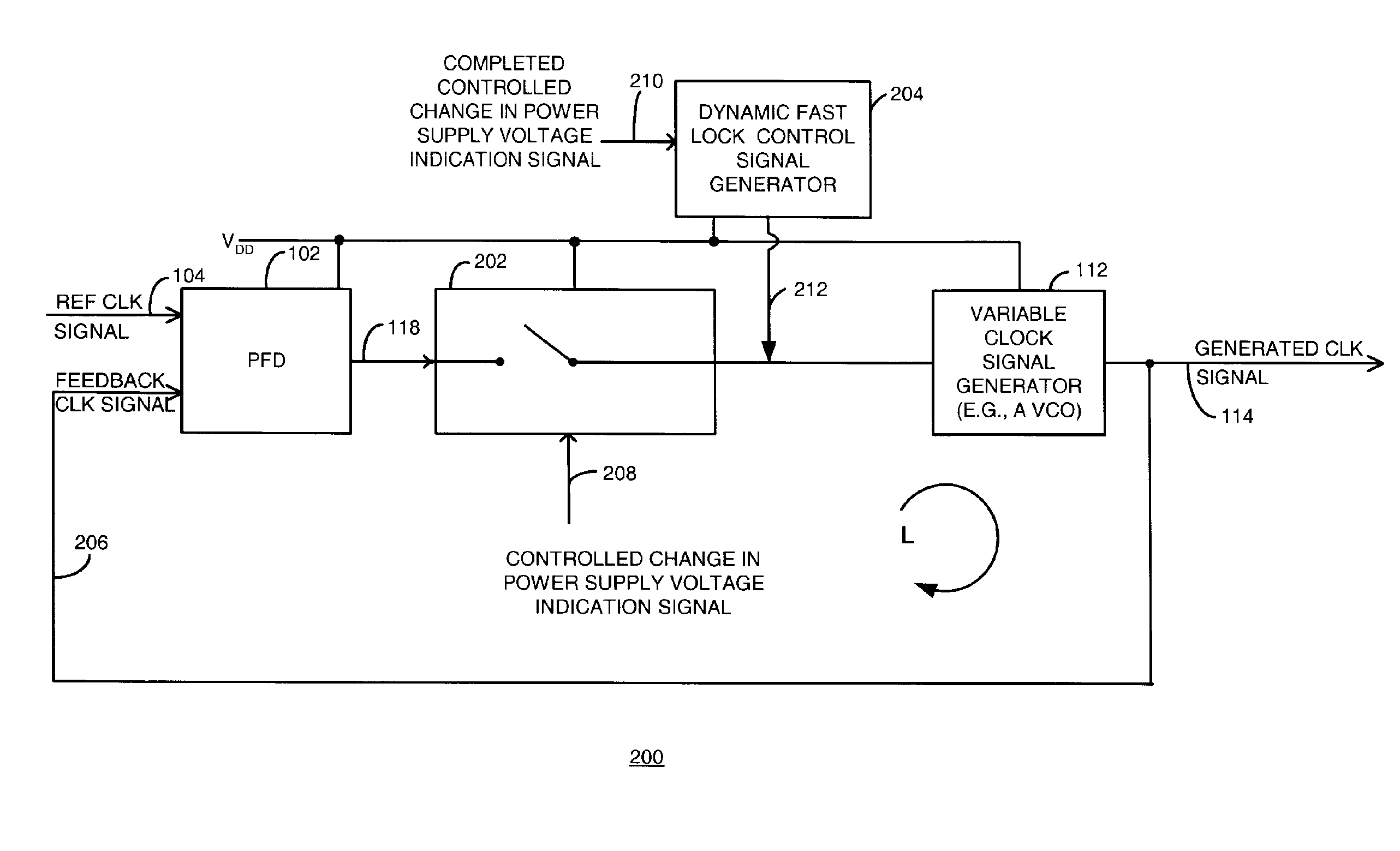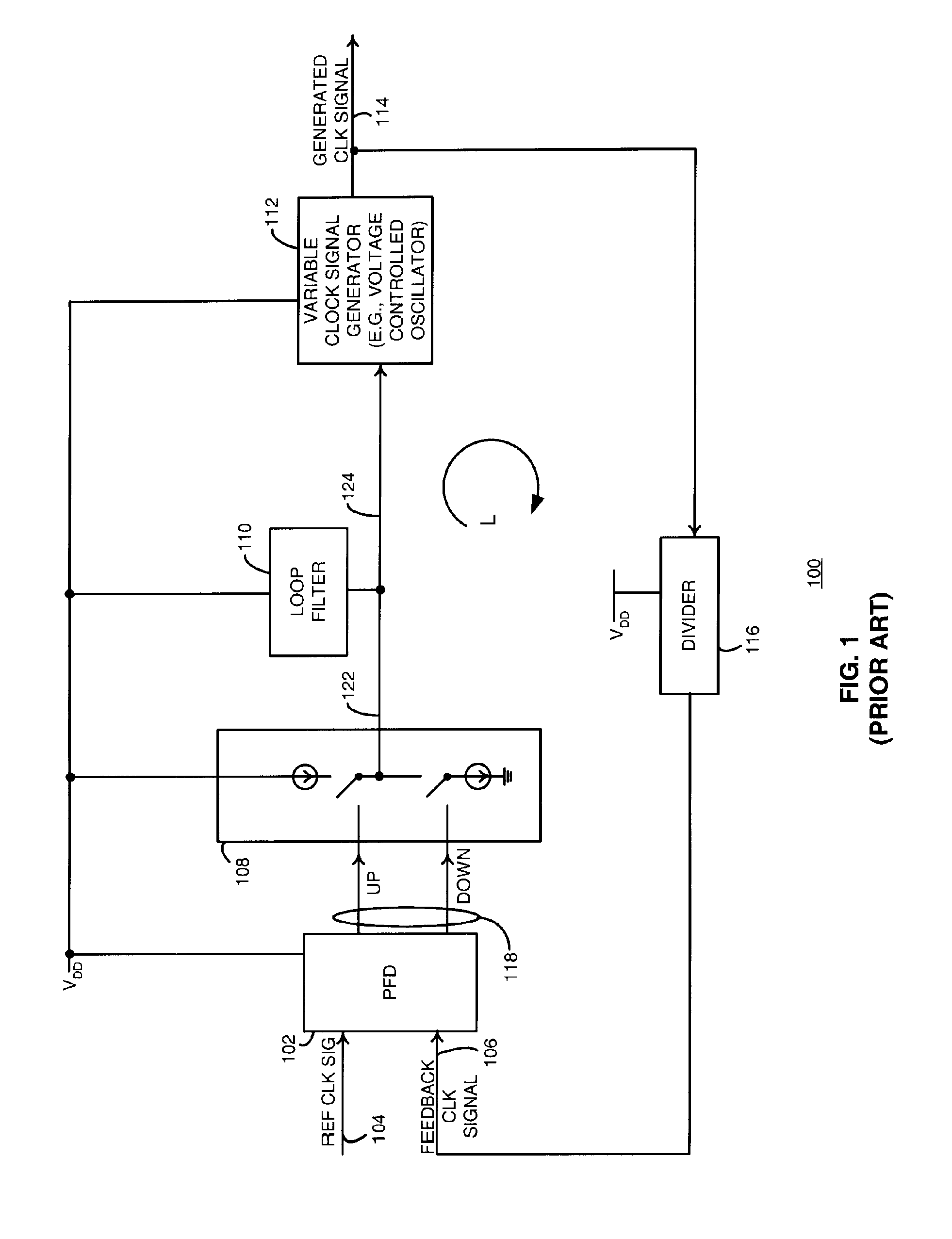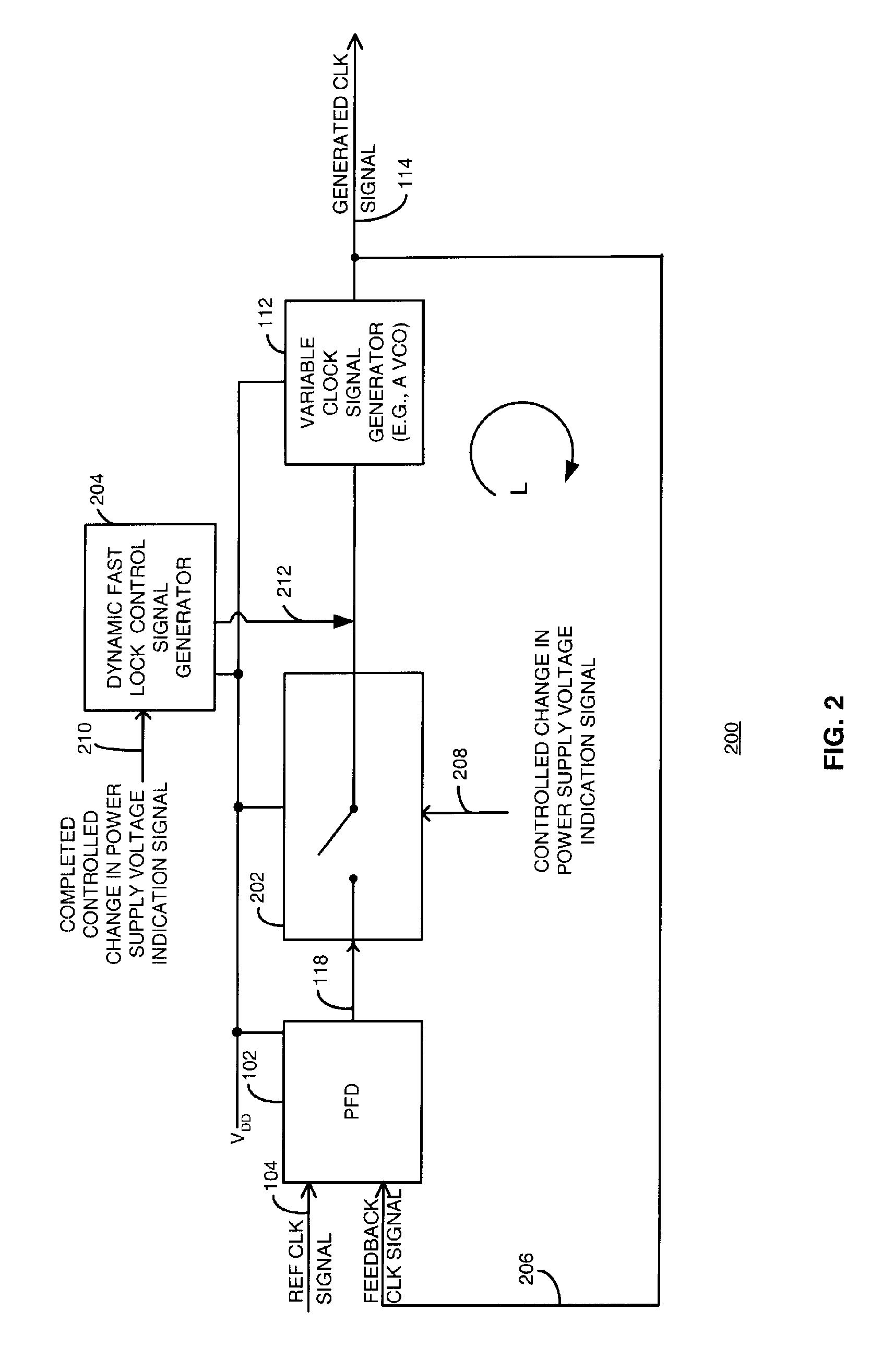[0028]In another embodiment, the clock generating circuit includes a selectively driven charge pump which includes open feedback loop switch logic that controls existing switch logic within the charge pump to selectively open and close the feedback loop of the clock generating circuit during power supply voltage ramping. In response to opening the feedback loop, the dynamic fast lock control signal generator selectively applies a stabilizing control signal to the variable clock signal generator such that the generated clock signal, (i.e. the output from the variable clock signal generator), can quickly lock onto the proper target frequency of the power supply voltage ramping.
[0029]In another embodiment, the dynamic fast lock control signal generator includes process corner and stabilizing logic that receives the generated clock signal during a chip reset mode and determines the process corner of the integrated circuit based upon a comparison between the frequency of the generated clock signal and at least one of a plurality of predetermined threshold frequencies. Based on the determined process corner and a received desired power supply voltage (i.e., the desired power supply voltage level after ramping), the process corner and stabilizing logic generates a control signal using a look-up table. A resistance divider network receives the control signal and selects which combination of pull up and / or pull down resisters to enable, thereby generating a stabilizing control signal. After power supply voltage ramping, the stabilizing control signal is selectively applied to the variable clock signal generator to minimize settling time of the generated clock signal.
[0030]In another embodiment, the generated clock signal received by the dynamic fast lock control signal generator during a chip reset mode is based on a process corner control signal. For instance, during a chip reset mode the variable clock signal generator receives a process corner control signal from a process corner control signal generator and produces the generated clock signal in response. The process corner control signal may correspond to the power supply voltage for the clock generating circuit during chip reset mode, but may also be any other suitable voltage or signal. After driving the variable clock signal generator with the process corner control signal and producing the generated clock signal, the dynamic fast lock control signal generator may determine the process corner of the integrated circuit based on the frequency of the generated clock signal as described above. The determined process corner can be utilized to classify the performance of the integrated circuit and the clock generating circuit and / or to generate a stabilizing control signal thereby minimizing settling time of the generated clock signal after power supply voltage ramping during normal mode.
[0031]By providing a stabilizing control signal to the variable clock signal generator after power supply voltage ramping, the frequency difference between the generated clock signal and the reference clock signal of the clock generating circuit is minimized and the settling time of the generated clock signal, as it locks onto the desired frequency at a second power supply voltage level, is decreased. As a consequence, devices capable of dynamic power supply voltage ramping can quickly change operational modes without unnecessary delay while also conserving battery life of a device.
[0038]The variable clock signal generator 112 of the clock generating circuit 200, may include a voltage controlled oscillator (VCO). However, it will be recognized that the variable clock signal generator 112 may include any suitable structure capable of generating an output signal, the generated clock signal 114, with a frequency based in part on a received input signal. As further illustrated with FIG. 2, the generated clock signal 114 also serves as the basis for the feedback clock signal 206. Because the stabilizing control signal 212 is selectively applied to the input of the variable clock signal generator 112, the generated clock signal 114 is able to quickly settle and lock onto the desired frequency as illustrated in the plot labeled FREQUENCY OF THE GENERATED CLOCK SIGNAL in FIG. 14.
[0071]Clock generating circuits 200 and 400 and the corresponding methods detailed in the figures described above, effectively allow for a fast locking time after power supply voltage ramping as a result of applying the stabilizing control signal 212 to the input of the variable clock signal generator 112 after ramping is complete. In other words, and as illustrated by the timing diagram of FIG. 14, the post-ramping frequency of the generated clock signal quickly locks onto a desired frequency, thereby providing the device with faster transition times among operational modes at new power supply voltage levels. The clock generating circuits 200 and 400 are able to produce a generated clock signal with fast locking times by minimizing feedback phase error detected by a phase frequency detector in the clock generating circuits. Other advantages will be recognized by those of ordinary skill in the art
 Login to View More
Login to View More  Login to View More
Login to View More 


